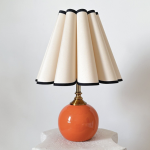
Introduction:
Gold, a precious metal known for its rarity and beauty, has been coveted by humans for thousands of years. One of its most captivating aspects is the many shades it can naturally occur in. In this article, we will delve into the diverse hues of gold and the reasons behind their unique colors.
The Science of Gold’s Colors:
Gold’s color is determined by its electronic structure, specifically the movement of electrons between its atoms. Pure gold is yellow in color, but its hue can range from reddish-yellow to greenish-yellow depending on the amount of other metals or alloys it is mixed with. The color of gold can also vary due to microscopic surface features and light reflection.
The Most Common Gold Hues:
The most common shades of gold are:
Yellow Gold: This is the natural color of pure gold and is the most popular choice for jewelry. It is created by mixing pure gold with copper and silver.
White Gold: White gold is made by combining pure gold with other alloys such as nickel, palladium, or platinum. This gives it a silvery-white color, which is often used in engagement rings and other fine jewelry.
Red or Rose Gold: Red or rose gold is created by mixing pure gold with copper. The more copper added, the redder the hue becomes. This type of gold is becoming more popular in recent years for its warm and romantic feel.
Other Unique Gold Hues:
In addition to these common gold shades, there are also more unique and rare hues that occur naturally or are created through specific processes:
Green Gold: Green gold occurs when silver is added to a gold alloy. The resulting hue can range from light green to olive-green, which is often used in vintage or antique jewelry.
Black Gold: Black gold is created by applying a special surface treatment to gold. This can result in a strikingly unique black hue, which is used in high-end watches.
Purple Gold: Purple gold is created by mixing gold with aluminum. It has a unique, bright purple hue that is rare and expensive.
Applications of Gold’s Color:
Gold’s unique shades and luster make it a popular metal for use in jewelry and decorative arts. Depending on the type of gold used, the unique hue can also convey different meanings or symbolism. For example, yellow gold is often associated with warmth and joy, while white gold can symbolize purity and elegance.








